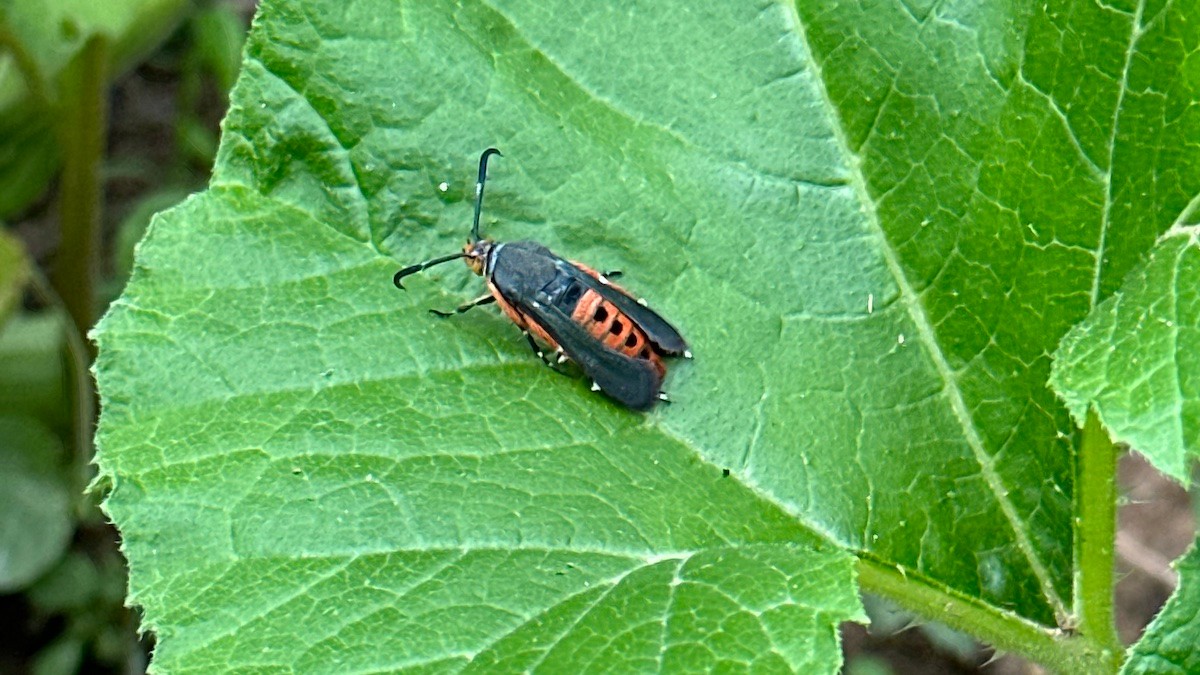
It’s a common experience for folks trying to grow vegetables without pesticides. You plant squash in the first stretch of warm weather and watch it grow into a beautiful plant. But soon after harvesting the first delicious squash, you come out to your garden and find the plant that was beaming with health a day earlier now limp and dying. This rapid change from health to death is a sure sign of squash vine borers–the larvae of an orange and black moth that feast on healthy squash from the inside out, making their presence unknown to the untrained eye until they have decimated the plant.
It’s hard to imagine a pest more universally hated than the squash vine borer because they are so difficult to eradicate without the use of harsh chemicals. Each moth can lay over a hundred eggs (that look very similar to the eggs of another squash pest: squash bugs) per season, making it very difficult to prevent by picking the eggs off.
There are several go-to organic remedies recommended, including handpicking the eggs, tarping plants, foil on the stem, squash surgery on infected stems, row covers, and the application of Bacillus thuringiensis (known as Bt). I’ve had very limited success with most of these methods except for Bt–and then only with careful application. Most of these methods–including Bt and row covers–can be complicated and require more time and technical expertise than an average home gardener has to give. It’s not unusual to put in a lot of work, but still have a very low success rate which can be very frustrating for a squash-loving gardener.
An easy solution that I have found incredibly successful is altering when I plant squash. Squash bugs become active once it warms up (between mid-May and June, depending on your climate). In northern climates, there is only one generation of vine borers per year; in the South, there are two. Simply planting after adult borers have finished laying their eggs will get you a good harvest with no intervention. In northern, cooler climates, this means planting in early July. In the South, it’s smarter to wait until early- to mid-August. (I’ve heard rumors of places deep into Zone 8 or 9, where they lay eggs even later, so it’s best to plant in March or very late in August here.)
Of course, in order to do this, it’s important to ensure you have enough time to plant and harvest squash before your first frost. It’s best to transplant established plants rather than seeds to maximize time in your garden. You can also hasten the harvest by planting varieties that mature quickly, such as the early prolific varieties of summer squash and the Black Beauty variety of zucchini.
I used to think of squash as one of the first vegetables to harvest in the summer. I’ve adjusted my expectations to think of squash as a late summer and even fall crop. By doing so, I’ve managed to have beds of squash and pumpkins with no sign of either vine borers or squash bugs without any real management beyond just weeding.










Conversation